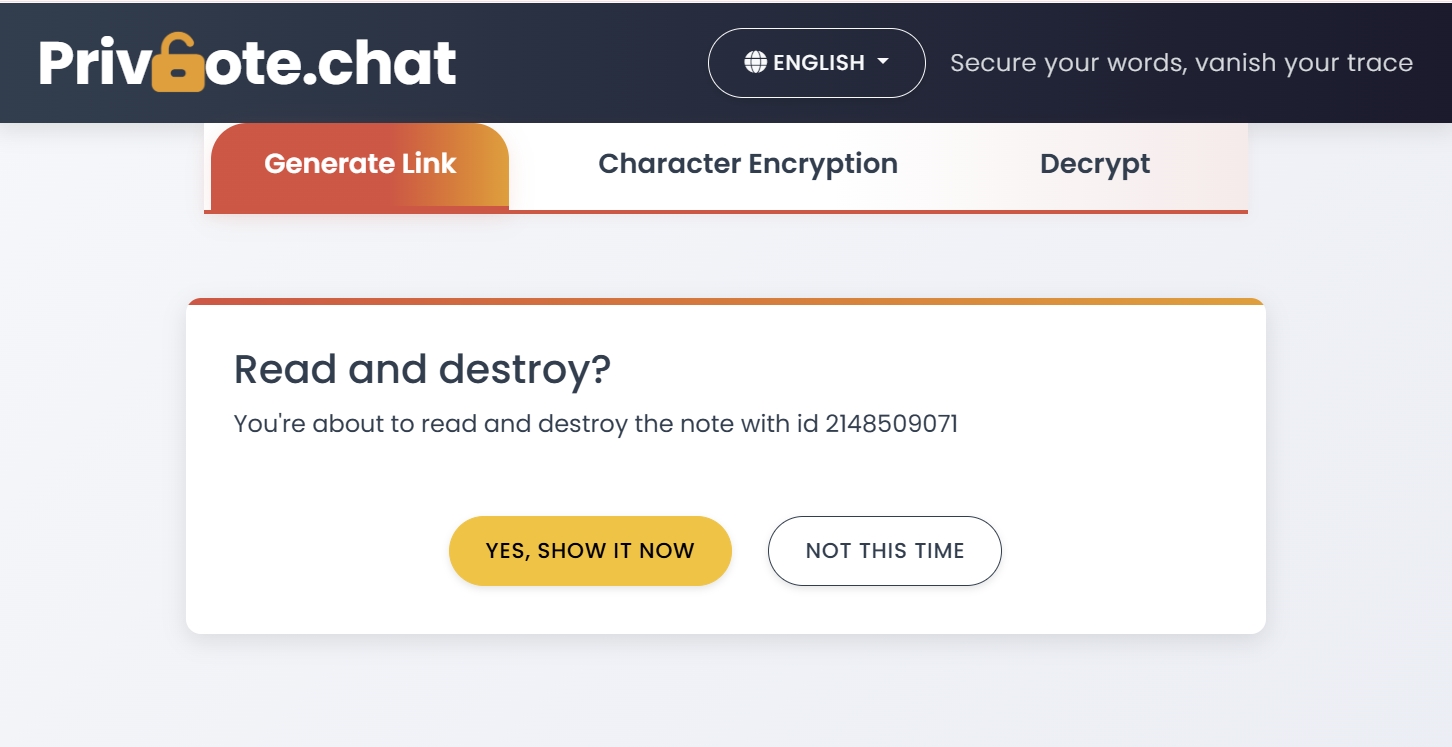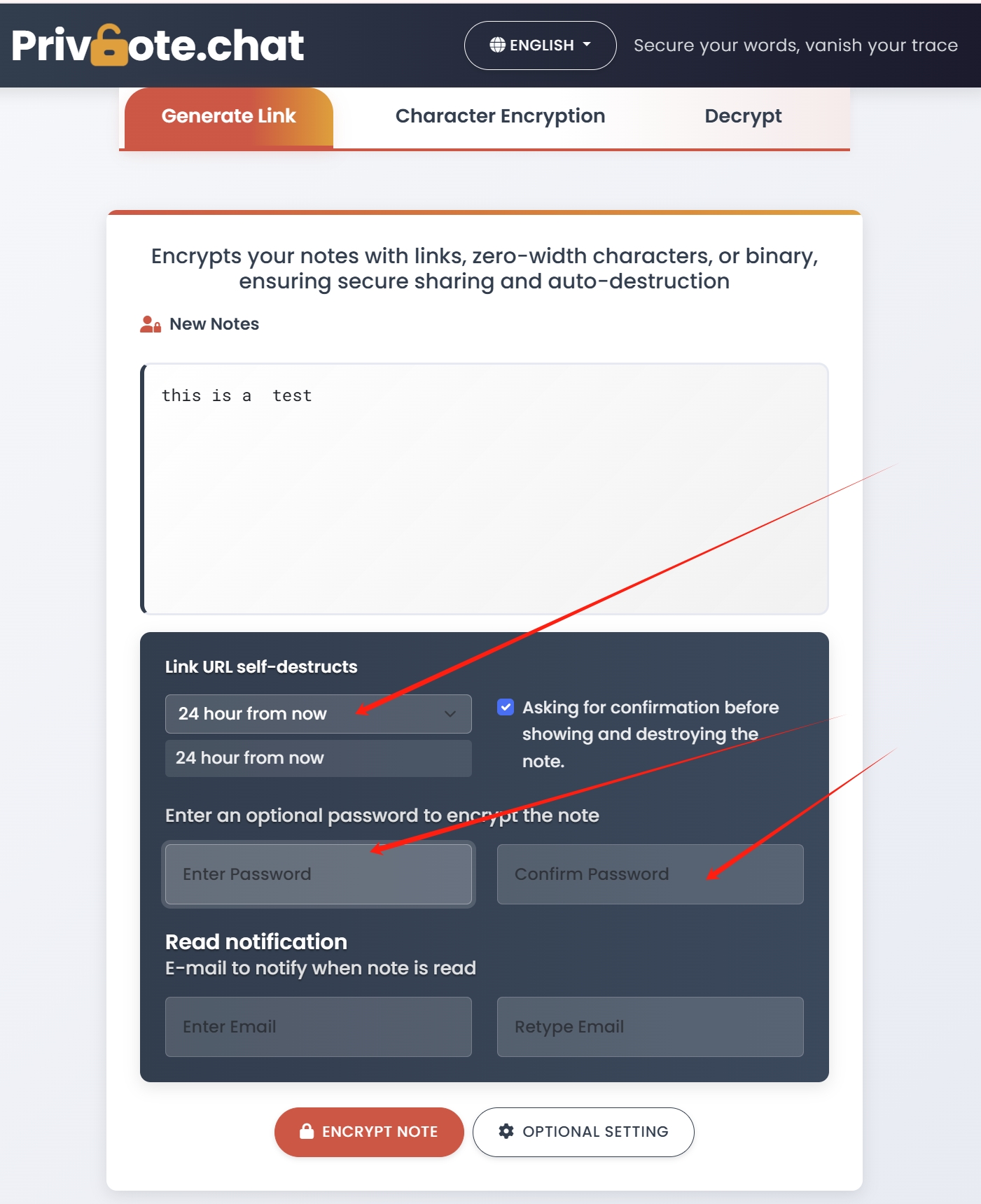Remote Work Security: Protecting Sensitive Data with Self-Destructing Notes

The Remote Work Security Challenge
The global shift toward remote and hybrid work models has fundamentally changed how organizations handle sensitive information. With employees accessing company data from diverse locations and devices, traditional security perimeters have dissolved, creating new vulnerabilities that organizations must address. According to a 2024 study by the Ponemon Institute, 67% of companies reported at least one data breach directly attributable to remote work practices in the past year.
As remote work becomes a permanent fixture in the business landscape, organizations need to implement robust security practices that protect sensitive information while enabling productive collaboration. Self-destructing notes and other ephemeral communication tools have emerged as essential components of a comprehensive remote work security strategy.
Remote Work Trends
A 2025 Gartner survey found that 82% of company leaders plan to continue allowing remote work at least part-time after the pandemic, with 47% planning to allow full-time remote work. This permanence highlights the need for long-term security solutions rather than temporary measures.
Common Security Risks in Remote Work Environments
Remote work introduces several security challenges that traditional office environments could more easily control. Understanding these risks is the first step toward implementing effective countermeasures:
1. Unsecured Networks and Devices
Remote workers often connect to corporate resources through home networks, public Wi-Fi, or personal devices that may lack enterprise-grade security:
- Home routers with default or weak passwords
- Outdated firmware on networking equipment
- Shared networks in co-working spaces or public locations
- Unpatched personal devices lacking security controls
2. Shadow IT Proliferation
Remote workers frequently adopt unauthorized applications to solve immediate productivity challenges:
- Consumer-grade file sharing and messaging apps
- Unsanctioned collaboration tools
- Personal email for business communications
- Unvetted productivity applications

3. Physical Security Concerns
Home and public environments lack the physical security controls of corporate offices:
- Shoulder surfing in public spaces
- Unauthorized access to devices by household members
- Improper disposal of physical documents
- Theft of devices containing sensitive information
4. Increased Phishing and Social Engineering
Remote workers are prime targets for sophisticated attacks:
- Reduced ability to verify suspicious requests in person
- Isolation making workers more vulnerable to social engineering
- Increased personal and work context mixing creating new attack vectors
- Phishing campaigns specifically targeting remote workers
Security Alert:
According to the 2024 Verizon Data Breach Investigations Report, phishing attacks targeting remote workers increased by 35% compared to pre-pandemic levels, with attackers specifically exploiting remote work contexts in their social engineering attempts.
How Self-Destructing Notes Enhance Remote Work Security
Self-destructing notes and ephemeral messaging provide several key security benefits that address the unique challenges of remote work environments:
1. Minimizing the Data Exposure Window
One of the most significant security advantages of self-destructing notes is reducing how long sensitive information remains accessible:
- Automatic deletion: Information disappears after being read, leaving no persistent record
- Reduced attack surface: Hackers can't access information that no longer exists
- Time-limited exposure: Even if a device is compromised later, sensitive data is already gone
Security Benefit
Self-destructing notes implement the security principle of "least privilege over time"—ensuring information is available only for as long as it's needed, then automatically revoking access.
2. Secure Cross-Platform Communication
Remote teams often use a mix of devices and operating systems, creating compatibility challenges for security tools:
- Device-agnostic access: Web-based self-destructing notes work across all devices and platforms
- No software installation: Reduces security risks associated with installing multiple applications
- Consistent security: Same protection regardless of the recipient's device or location
3. Protection Against Common Remote Work Threats
Self-destructing notes help mitigate several remote work-specific security risks:
| Remote Work Risk | How Self-Destructing Notes Help |
|---|---|
| Unsecured device access | Information disappears after viewing, preventing later access by unauthorized users |
| Network interception | End-to-end encryption protects content during transmission |
| Shadow IT risks | Provides a secure alternative to consumer messaging apps for sensitive information |
| Screen sharing/recording | One-time access limits exposure during virtual meetings and calls |
| Data persistence | Automatic deletion ensures information doesn't remain indefinitely on personal devices |

Key Use Cases for Self-Destructing Notes in Remote Work
Remote teams can leverage self-destructing notes in numerous scenarios to enhance security while maintaining productivity:
1. Secure Credential Sharing
Remote work often requires sharing access credentials for various systems and platforms:
How to Use Privnote:
- Create a note containing temporary access credentials
- Enable password protection for an additional security layer
- Share the link through your company's primary communication channel
- Share the access password through a different channel (implementing dual-channel authentication)
- The credentials disappear after being viewed, preventing them from being stored in chat logs or email
2. Virtual Meeting Security
Video conferences and virtual meetings present unique security challenges:
- Share meeting links containing sensitive information via self-destructing notes
- Distribute discussion points containing confidential data securely
- Share screen-sharing passwords separately from meeting links
- Securely distribute one-time access codes for restricted sessions
3. Sensitive Remote Onboarding
Bringing new team members onboard remotely involves sharing various sensitive details:
- Temporary system credentials before permanent access is established
- Initial login information for company resources
- Verification codes and multifactor authentication setup details
- Temporary access to training materials or sensitive documentation
4. HR and Financial Communications
Remote work complicates the secure handling of sensitive HR and financial information:
How to Use Privnote:
- Share time-sensitive compensation details securely
- Distribute tax document access information
- Communicate about sensitive personnel matters
- Provide temporary access to financial portals or systems
- Enable read receipts to confirm the information was received
5. Client and Third-Party Communications
Remote teams often need to share sensitive information with external parties:
- Client account credentials or access information
- Preliminary contract details or proposals
- Confidential project specifications
- Sensitive feedback or discussion points

Best Practices for Implementing Self-Destructing Notes in Remote Teams
To maximize the security benefits of ephemeral messaging for your remote workforce, follow these implementation best practices:
1. Develop Clear Usage Policies
Establish guidelines for when and how to use self-destructing notes:
- Define what types of information should be shared via ephemeral messaging
- Specify when permanent records are required instead
- Create clear examples specific to your organization's workflow
- Integrate these guidelines into your overall remote work security policy
Important Consideration
Self-destructing notes should complement, not replace, your organization's document management system. Establish clear guidelines for which information requires permanent storage and which can leverage ephemeral communication.
2. Provide Comprehensive Training
Ensure all remote team members understand how to use self-destructing notes securely:
- Include ephemeral messaging in security awareness training
- Demonstrate proper usage with practical examples
- Explain both the benefits and limitations of self-destructing notes
- Provide refresher training as features or policies evolve
3. Implement Multi-Channel Authentication
Enhance security by separating access components:
- Send self-destructing note links through one communication channel
- Provide passwords or access instructions through a different channel
- Use existing authenticated systems for primary communication
- Consider complementary security measures like time-limited access
4. Leverage Advanced Security Features
Take advantage of all available security options:
Password Protection
Add passwords to your self-destructing notes, especially for highly sensitive information shared with remote team members.
Custom Expiration
Set appropriate time limits for when notes should expire, even if they haven't been accessed yet.
Read Notifications
Enable notifications to confirm when your remote team members have accessed and viewed sensitive information.
Advanced Encryption
Use the highest level of encryption available, such as zero-width character or binary encryption, for the most sensitive remote work communications.
5. Integrate with Existing Security Tools
Ensure self-destructing notes work harmoniously with your broader security ecosystem:
- Document the use of ephemeral messaging in your security policies
- Include in security awareness training programs
- Consider how it complements your existing secure communication channels
- Incorporate into your incident response procedures
Measuring the Impact of Self-Destructing Notes on Remote Security
To ensure your implementation is effectively enhancing remote work security, consider these evaluation metrics:
| Metric | Measurement Approach |
|---|---|
| Adoption rate | Track usage statistics and team engagement with the self-destructing note platform |
| Shadow IT reduction | Monitor for decreased use of unauthorized messaging and file-sharing applications |
| Security incident reduction | Compare security incidents related to sensitive information sharing before and after implementation |
| User feedback | Collect qualitative feedback on usability and perceived security benefits |
| Policy compliance | Audit usage patterns to ensure alignment with established guidelines |
Conclusion: Securing the Future of Remote Work
As remote and hybrid work models become permanent fixtures in the business landscape, organizations must evolve their security practices to address the unique challenges of distributed teams. Self-destructing notes provide a powerful tool for enhancing remote work security, particularly when it comes to sharing sensitive information that doesn't require permanent storage.
By implementing ephemeral messaging solutions like Privnote alongside comprehensive policies, training, and complementary security measures, organizations can significantly reduce the risks associated with remote work while maintaining productivity and collaboration.
Remember that the most effective security strategy is one that balances protection with usability. Self-destructing notes excel at this balance, providing robust security through simplicity and ease of use—making them ideal for remote teams that need secure communication without complexity.
Ready to enhance your remote team's security posture? Try Privnote's self-destructing notes for your sensitive remote work communications.